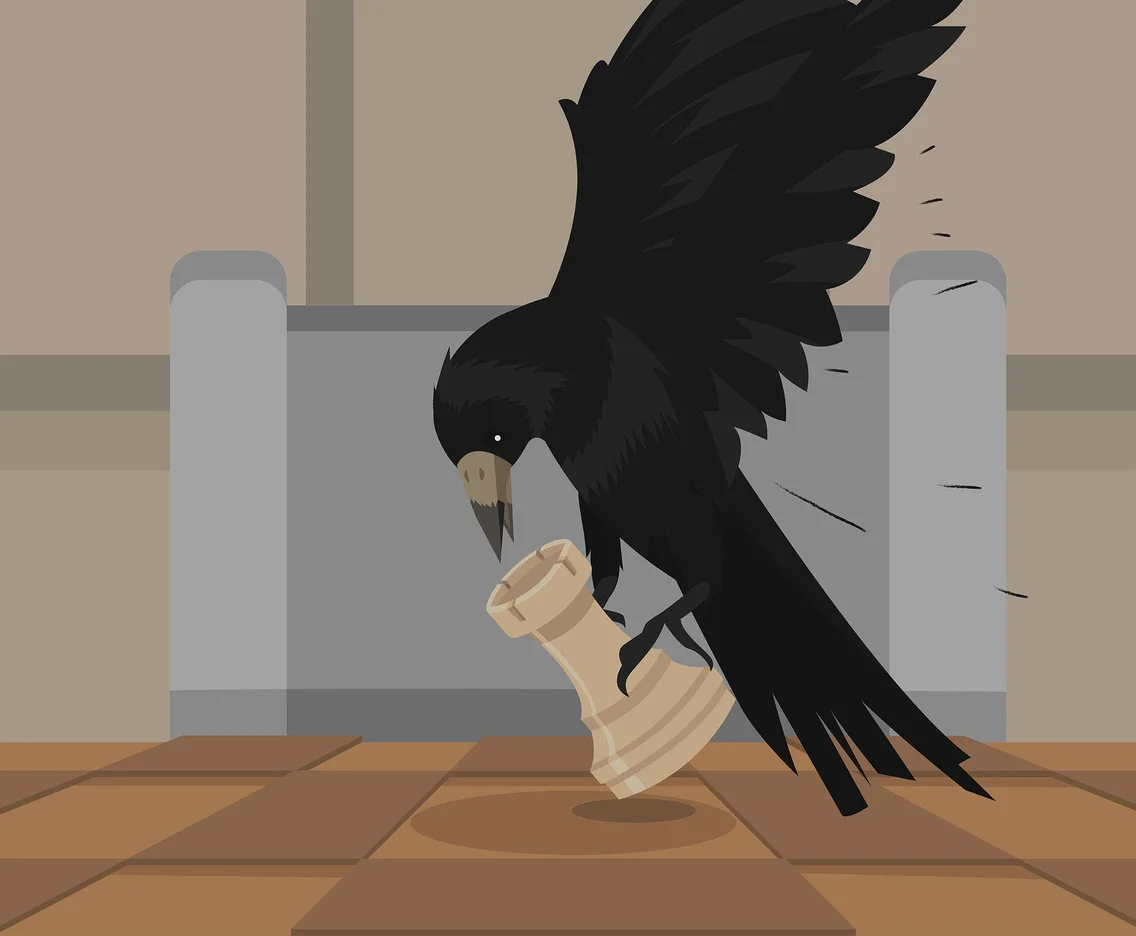Rook to a Chess Newbie NYT: In the New York Times Mini Crossword on June 21, 2025, the clue “Rook, to a chess newbie” appeared, and the answer is CASTLE.
At first glance, the clue may seem odd—why is a rook called a “castle” by beginners? This article digs into that crossword clue, explores how the rook works in chess, why novices say “castle,” and how clues like this bridge wordplay and gaming knowledge.
1. The Crossword Clue: “Rook, to a chess newbie” → CASTLE
The clue “Rook, to a chess newbie” played on the idea that many new chess players equate the rook with a castle (its more familiar visual metaphor). Crossword solvers saw the six-letter answer CASTLE, and several puzzle guides confirm this was the intended solution in the NYT Mini version.
Though in formal chess terms the rook is not literally a castle, the shape of the rook piece has long been associated with turrets or towers—so for many beginners, “castle” feels intuitive. Also, the move castling (a special king + rook move) reinforces the linkage in casual conversation.
Puzzlers love this kind of clue because it blends linguistic play (what a beginner might call it) with familiar game knowledge—a hallmark of many NYT Mini clues.
2. The Rook Piece: Its Role & Movement in Chess
To understand why some novices call the rook a “castle,” let’s look at what the rook actually does in chess:
- The rook (symbol ♖ / ♜) can move any number of unoccupied squares horizontally or vertically, but cannot jump over pieces.
- Each player starts with two rooks, placed in the corners: a1 & h1 for White, a8 & h8 for Black.
- Rooks are classified as major (or heavy) pieces, valued around 5 pawns in standard material valuation.
- A unique interaction is castling, where the king moves two squares toward a rook and that rook jumps over the king to the adjacent square. This particular move links the rook with the term “castle” in chess parlance.
While “castle” as a noun is not the official name, the rook’s design evokes the image of a fortress tower, which is likely why many beginners default to “castle” in speech or puzzles.
3. Why Beginners Call the Rook “Castle”
There are a few reasons why novices might instinctively refer to the rook as a “castle”:
- Visual resemblance: The rook often resembles a turret or fortress tower, with battlements at the top, so beginners map it to the idea of a castle.
- Everyday language: In common speech, people think of castles (medieval strongholds) before specialized chess terms.
- Castling move reference: Because the rook participates in castling, beginners may conflate the term (castle) with the piece itself.
- Simplified teaching language: In some beginner guides or casual explanations, teachers might refer to rooks as castle pieces to simplify the game for new players.
This is exactly what the NYT crossword clue exploits: the idea that a “chess newbie” might naturally call a rook a “castle.”
4. Crossword Clue Strategies & Wordplay in “Rook, to a chess newbie”
This clue is a neat example of how crossword writers use perspective, misdirection, and domain knowledge:
- Perspective pivot: The phrase “to a chess newbie” signals we are not looking for a technical term but a more colloquial or naive synonym.
- Double reading: “Rook, to a chess newbie” hints that the naive might misname it, so the solver should think what a beginner might call it.
- Length & enumeration: The six-letter constraint (CASTLE) narrows options and forces that exact match.
- Avoiding directness: A clue like “Tower piece in chess” would lead to ROOK, but this is more playful and indirect.
For newer crossword solvers, the structure of the clue teaches a valuable skill: pay attention to voice (newbie, beginner, heard by a child) and not assume the clue uses exact technical vocabulary.
5. Learning Chess Vocabulary: From Rook to Castle
For chess beginners, the shift from calling a rook “castle” to using proper chess terminology is part of the learning journey. Here’s how to navigate that:
- Memorize piece names: Rook, bishop, knight, queen, king, pawn. Use flashcards or apps to reinforce correct names.
- Understand moves & rules: Learn how each piece moves. The rook’s horizontal/vertical movement helps distinguish it from diagonal-moving bishops.
- Practice castling properly: When you learn the castling rule, reinforce that the move is named after the idea of a castle, not that the rook is a castle.
- Play beginner puzzles: Use chess puzzles that label pieces correctly; over time the mismatch with “castle” fades.
- Encourage correct language: If teaching new players, gently encourage using “rook” rather than “castle,” while recognizing the common beginner shorthand.
Crossword puzzles like the NYT Mini clue also help bridge the gap—solvers are nudged to connect everyday language with specialized vocabulary.
6. Applying the Lesson: How to Use This Clue Wisely
If you encounter the clue “Rook, to a chess newbie NYT”, here are tips to solve it and use it as a learning opportunity:
- Recognize the “to a newbie” flag: That phrase signals you should think of what an untrained person would call something.
- Count letters first: Six letters suggests CASTLE, not ROOK (which is 4 letters).
- Check crossing letters: Use intersecting clues to confirm C _ S T L E pattern.
- Use it as memory anchor: Now that you know the official and informal terms, use this clue to reinforce the correct term “rook” and the move “castling.”
- Share & teach: Puzzles like this are great fun to show others—“Hey, do you know why rook is called castle in this clue?”
Over time, your fluency in chess vocabulary and crossword logic both improve.
Conclusion
The clue “Rook, to a chess newbie NYT” cleverly plays on beginner assumptions to arrive at the answer CASTLE, rather than the technically correct “rook.” This use of perspective-based wordplay is typical in crossword puzzles and enjoyable for solvers.
For chess learners, it points out how everyday language can clash with formal terminology—and reminds us that learning piece names and moves (like rook movement and castling) helps bridge that gap.
Next time you see the rook on the board, remember: beginners might say “castle,” but as you grow in chess, you’ll know the piece by its proper name—and that clarity deepens your understanding of the game.





